|
|
|
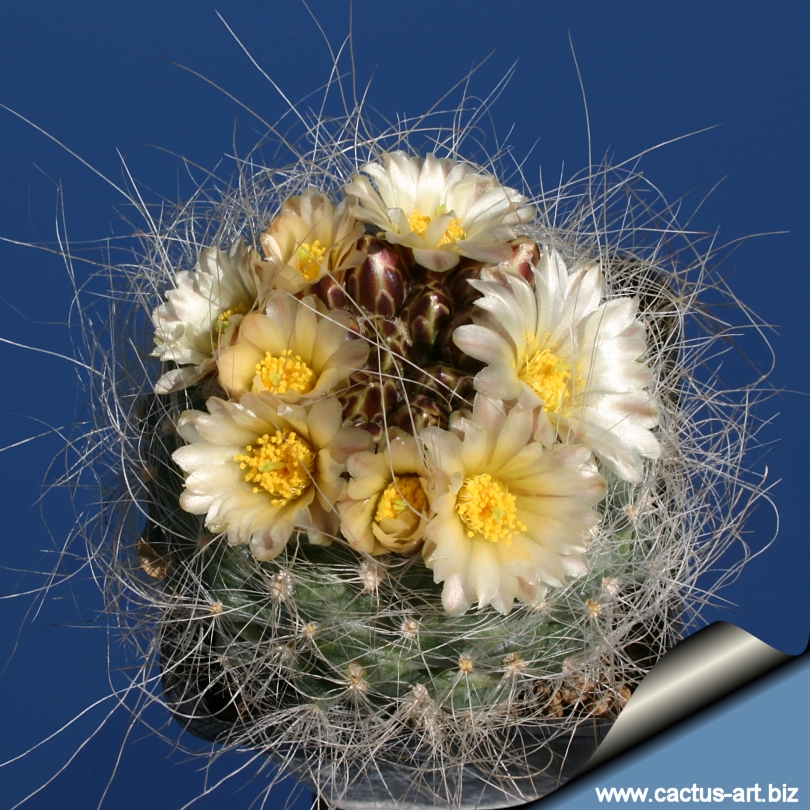
P. paradinei (SB502 Coconino County, Arizona, USA)
|
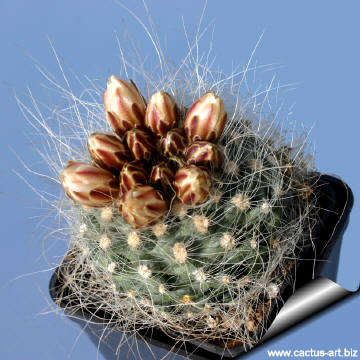 |
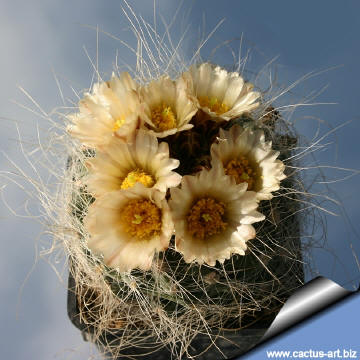 |
|
. |
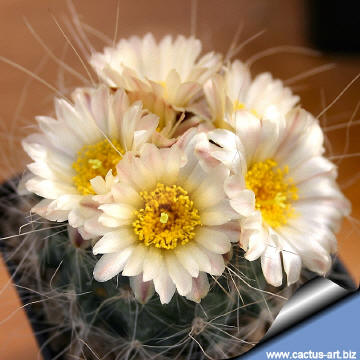 |
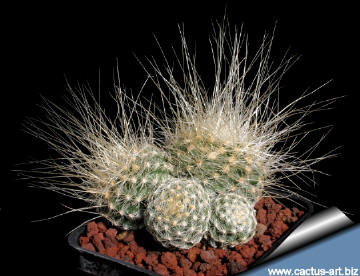
P. paradinei (RP 80 Coconino County, Arizona, USA)
This is a very nice small cactus and one of the more frost hardy species
from North America.
|
|
. |
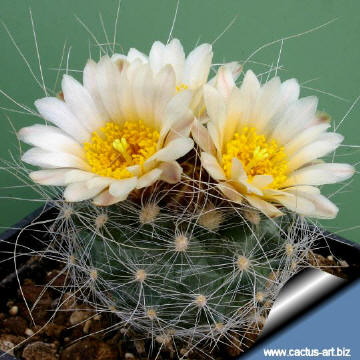 |
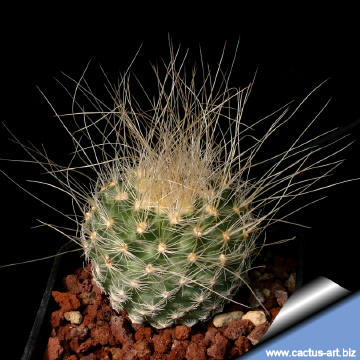 |
|
. |
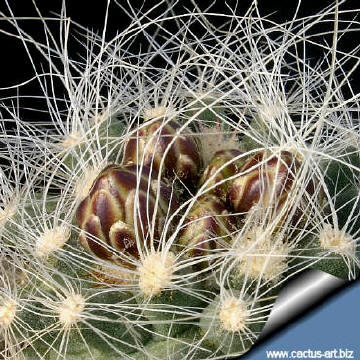 |
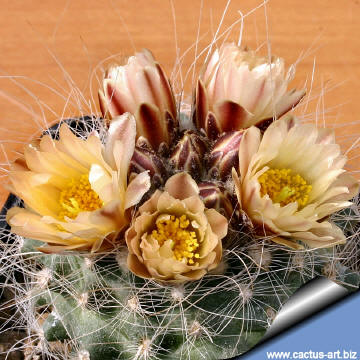
|
|
Advertising
|
|
|
|
|
Family:
Cactaceae
(Cactus Family)
Scientific Name:
Pediocactus paradinei
B.W. Benson
Published in: Cactus and Succulent Journal of the Cactus and Succulent Society of
America. 29:136-137
Conservation status: Listed in
CITES appendix I
Type:
Holotypus
deposited in the Boyce Thompson Southwestern Arboretum
Herbarium,
Nr. Bwb 8-1956-1.
Isotypus
deposited in the Herbarium of the Pomona College Nr. 286120.
Basionym:
Pediocactus paradinei (Marshall, Saguaroland Bull.10:89-91, 107,
1956,
nom. nud. without Latin diagnosis).
Synonyms:
-
Pilocanthus paradinei
(B. W. Benson) B. W. in:
Benson & Backeberg, Kakt. and. Sukk. 8:187-189.
1957
-
Pediocactus
simpsonii
var. paradinei
(B.W.Benson) Halda 1998
Common name
(s):
-
Paradine´s
House Rock Valley
Cactus
-
Kaibab Pincushion Cactus
-
Park
Pincushion-Cactus
-
Bristly Plains Cactus
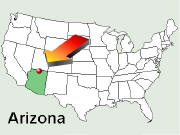 Distribution: Habitat:
East side of the
Kaibab Plateau and west edge of House
Rock Valley, (Coconino County; northern Arizona, USA) Distribution: Habitat:
East side of the
Kaibab Plateau and west edge of House
Rock Valley, (Coconino County; northern Arizona, USA)
Type
locality: Houserock Valley, Coconino County, Arizona.
Habitat:
It is a narrow
endemic,
occupying typical restricted habitats.
They live in relatively high altitudes, from 1600 m to 2100 m,
in open
woodland areas under the trees of
Ponderosa pine. In this area winters are very cold, sometimes snow even
in the spring. The substrate is a limestone gravely soils with
high content in calcium carbonate (reduced clay content).
Etymology:
The
genus
name
"Pediocactus"
derives from the Greek words “Pedion” meaning
“plain/level” referring to the general habitat of the plant on
the plains, and the word “cactus”
(
an old genus name)
(The
genus name implies:
“cactus of the plains”). |
Description: It is a pretty, small, grey-green globose plant.
Stem:
3-4 cm tall, 6-8 cm in diameter, half
of it underground.
Spines:
3 to 6 central spines, long, flexible
and hair-like, white to ashy grey with yellow to brown tips.,
obscuring stem apex, 1-3 cm long; 13-22 radial spines.
Roots:
with a big tap root up to 15 cm
long
Flower:
Flower 20mm long,
25mm in diameter, pinkish beige to yellow
Blooming season: Late April to early May.
Notes: The
"hair-like" spine is not always a "typical" characteristic of
P. paradinei; however in habitat there are few plants with such a long
white hair. There are also hair-less adult plants very similar to P. simpsonii. They are extremely variable in spination. |
|
|
|
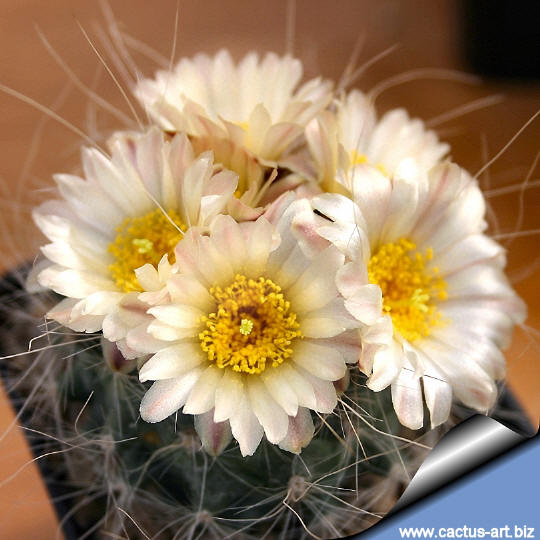
Cultivation:
They are some of the most difficult
cacti
to grow from their own roots,
cultivated only by expert cactus
enthusiasts.
Nevertheless plants on their own roots
are very
hardy. They don’t tolerate
living
in a humid and heated green houses.
Place them in a ventilated position;
they like "wind". Avoid
direct sunlight exposure in summer. Water moderately only from
early March to May; the
rest of the
year keep them in dormancy. They are
exceptionally slow growers.
They
may need 7 to 10 years
to grow to
mature specimens
with long hairy spines.
For this reason it is
frequently grafted on strong hardy cactus stock like Opuntia
and Echinocereus.
Propagation: Seeds:
Temperature for optimum
germination: night minimum approx 17 day maximum to near 40
C at any time of year with proper temperatures and
daylength (ca.13-14 hours); it is possible to extend
day-length with
artificial lights. Anyway the seeds
germinate slowly with difficulty and a low rate of
success (But germiation is
comparatively easy if compared with other Pediocactus
and Sclerocactus species and often new seedling
cluster spontaneously around the plant every year),
scarification and
stratification help, alternate
freeze
and
thaw both wet and dry, but don’t keep wet, alternate wet and
dry with changing temperature.
Germination can take several
years so keep pot and try again next year. Seedlings do not do
well either, and some die each year, for this reason
plants are commonly
grafted on hardy stocks like
Opuntia compressa in this case
they are easy to grow and no special skill is required.

 |
|